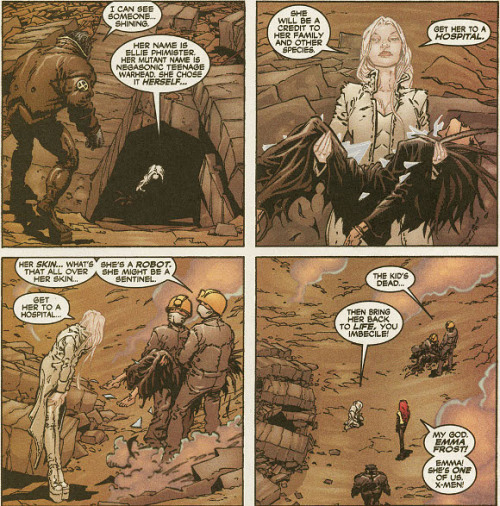"All the Stones the Builders Rejected"  (And some days it takes more Stones than others...) Where Mythical Bestiary meets Contemporary Culture and Chews On Its Leg Until Covered with Slobber.
(And some days it takes more Stones than others...) Where Mythical Bestiary meets Contemporary Culture and Chews On Its Leg Until Covered with Slobber.
Jack Benny, the X-Men, and Continuity in Comics
Re-reading Grant Morrison's run on New X-Men led me again to its sequel, Joss Whedon's Astonishing--
and I now proclaim to the anxious masses that Torn (Astonishing X-Men Volume III) is best read in tandem with Morrison's Imperial (New X-Men Volume II).
Jack Benny is supposed to have gotten the biggest laugh in radio history when an armed robber snarls, "Your money or your life!" Benny doesn't say anything. The audience explodes. He waits (the power of the pause) and lets them subside before he answers, "I'm thinking about it." The joke works because the audience knew Benny's comedic persona, and knew that he would need time before such a "difficult" choice.
Just so with Whedon's "Torn", in which Cassandra Nova tries to escape by planting herself in Emma Frost's subconscious, then using Frost's manipulative ability to paralyze her captors. Scott is frozen by his deepest anxiety. Henry "devolves" into a feral carnivore. Logan reverts to his Little Lord Fauntleroy childhood.
Logan's "turn into Percy Dovetonsils" works because of the character's backstory; it wouldn't be so funny if the audience wasn't in on the joke.
The first time I read this story, the attack by Emma's psychic avatars was confusing (as it's meant to be) but I shrugged it off and went along for the ride. Read immediately after the Morrison stories and I realized how poignant they were, manifestations of Emma's own guilt and fear. Cassandra Nova personifies Emma's pain at surviving the Genosha genocide; Sebastian Shaw represents Emma's self-loathing in her longest-lasting relationship. I didn't recognize Negasonic Teenage Warhead ("Boy, we really have run out names," Kitty says) until this second or third reading:
She's one of Emma's murdered students, seen for only a few panels in Morrison. The last manifestation, "Perfection" is an early version of Emma herself as the White Queen, dominatrix from Hell. Kitty's reaction matches the readers, as we all thought she'd already left Emma trapped in a cave.
Ordinarily, I dislike comics fans' worship of continuity. It's the inside baseball that drives readers away from serial story telling because some Asberger's/fashion victim just broke into your adult conversation with the news that Squirrel Green Lantern only wore the Star Sapphire costume for three issues in 1967, and he, the fanboy, really likes the second version of Empire Strikes Back but the third one makes no sense. Yes, great artists build up layers upon layers of meaning, allusion and reference in their work, but continuity is not the same as depth.
So what did we (I) learn here today? When writers use continuity in the way that Jack Benny did, the reader's prior knowledge adds layers of pleasure. Used as barbed wire to keep the gentiles away, continuity is a disease. One more reason to promise me you'll never pay money for a comic with Cable on the cover or the word "Crisis" in its title.
Subscribe to:
Post Comments (Atom)





No comments:
Post a Comment